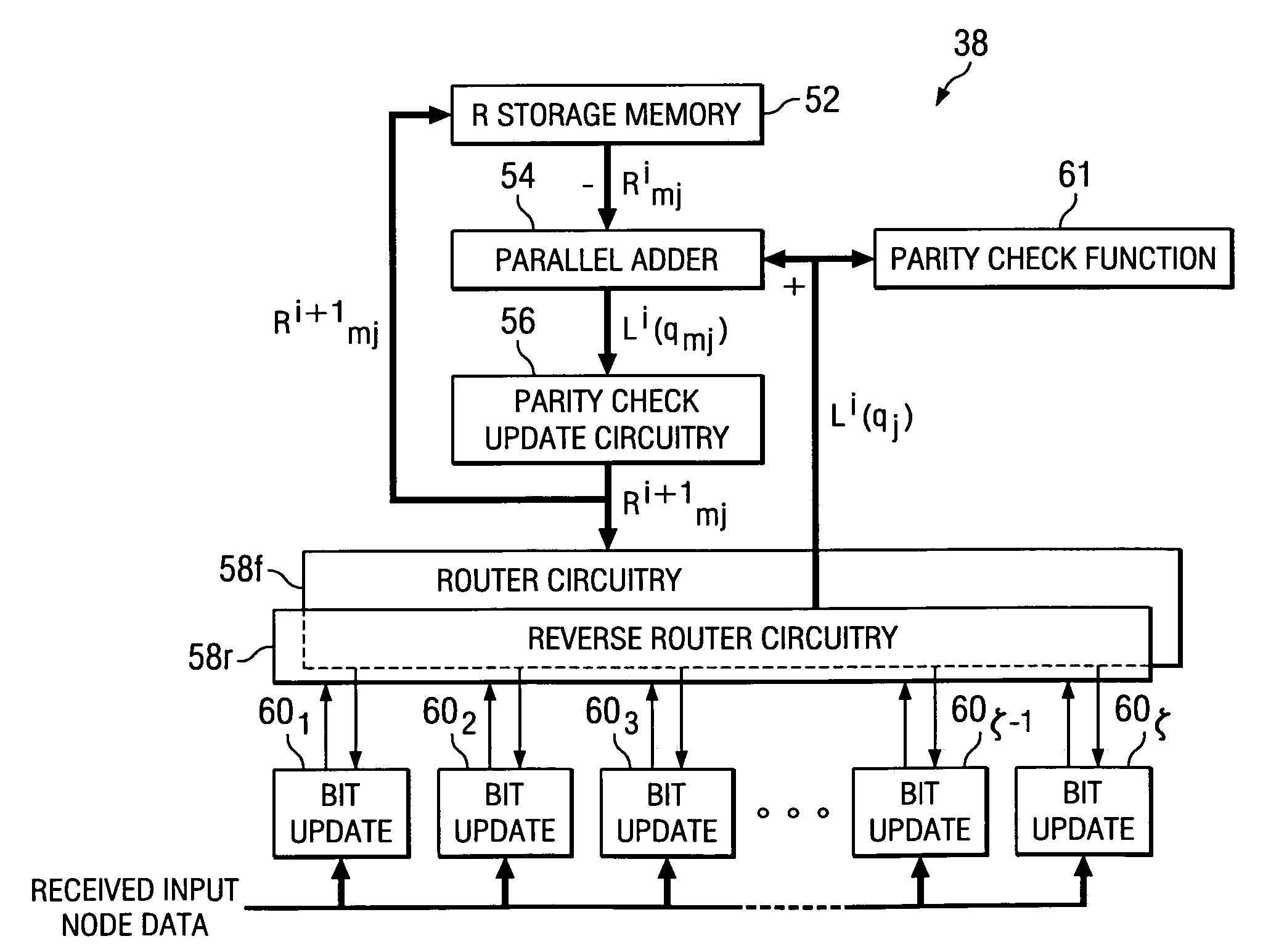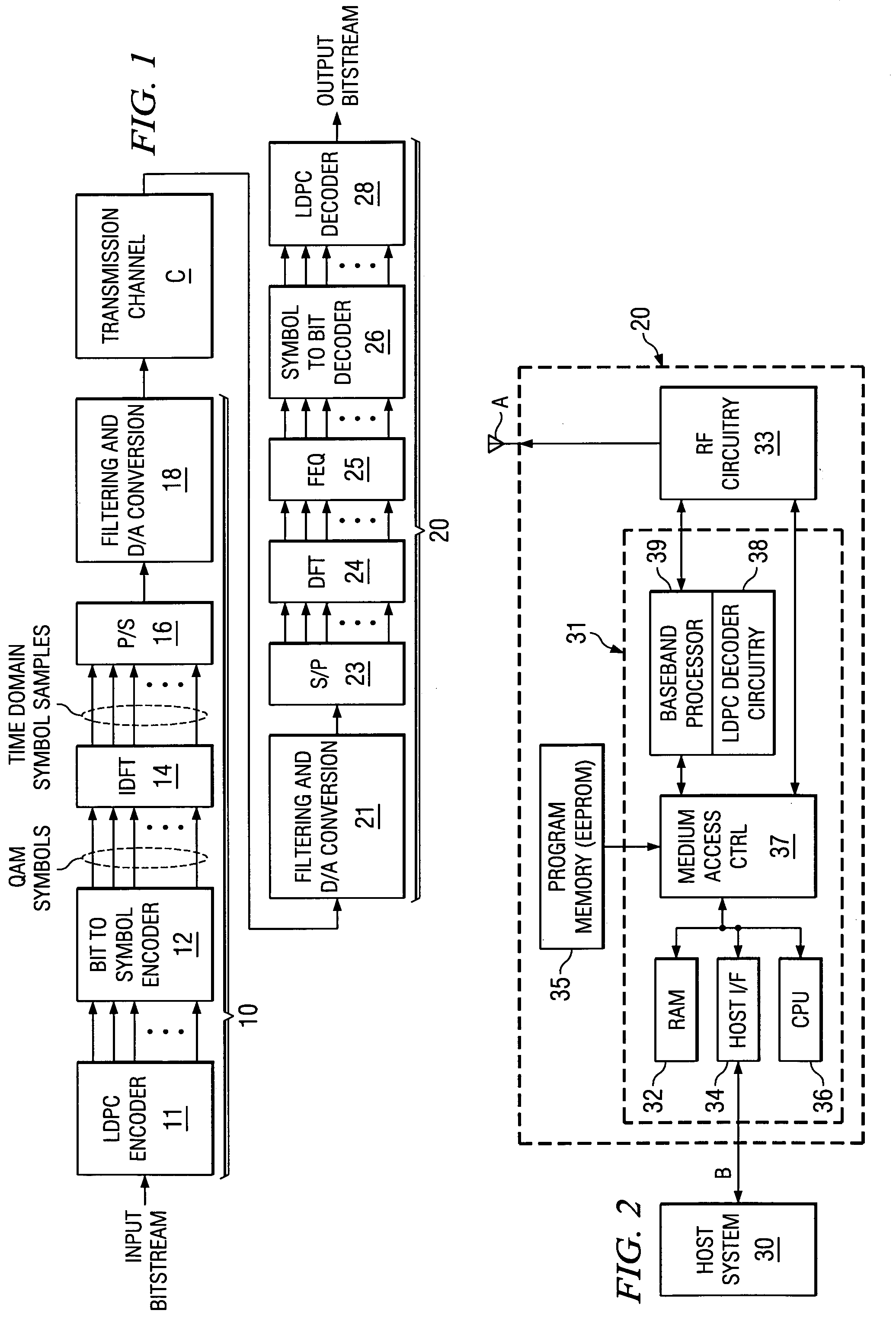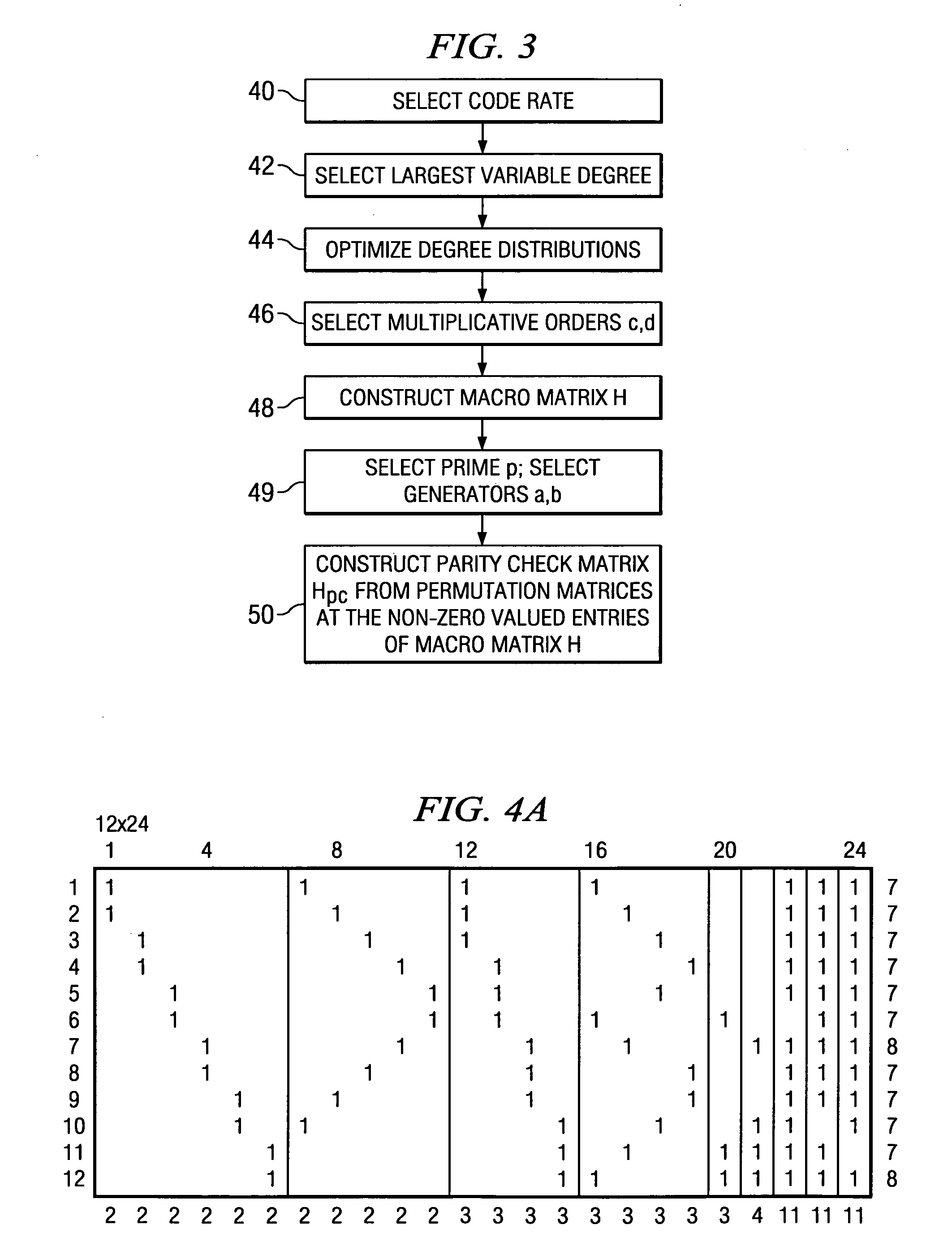Hardware-efficient low density parity check code for digital communications
a parity check and low density technology, applied in the field of hardware-efficient low density parity check codes for digital communications, can solve the problems of not necessarily correcting every time, the likelihood of data corruption, and the necessity of considering the likelihood of data communication error
- Summary
- Abstract
- Description
- Claims
- Application Information
AI Technical Summary
Benefits of technology
Problems solved by technology
Method used
Image
Examples
Embodiment Construction
[0036]The present invention will be described in connection with an example of its implementation in an exemplary transceiver, for example a wireless network adapter such as according to the IEEE 802.11 wireless standard. It will be apparent to those skilled in the art having reference to this specification that this invention is particularly well-suited for use in such an application. However, it is also contemplated that this invention will be of similar benefit in many other applications that involve error correction coding, including communications according to orthogonal frequency division multiplexing (OFDM), discrete multitone modulation (DMT) for example as used in conventional Digital Subscriber Line (DSL) modems, and other modulation and communication approaches, whether carried out as land line or wireless communications. It is therefore to be understood that these and other alternatives to and variations on the embodiment described below are contemplated to be within the...
PUM
 Login to View More
Login to View More Abstract
Description
Claims
Application Information
 Login to View More
Login to View More - R&D
- Intellectual Property
- Life Sciences
- Materials
- Tech Scout
- Unparalleled Data Quality
- Higher Quality Content
- 60% Fewer Hallucinations
Browse by: Latest US Patents, China's latest patents, Technical Efficacy Thesaurus, Application Domain, Technology Topic, Popular Technical Reports.
© 2025 PatSnap. All rights reserved.Legal|Privacy policy|Modern Slavery Act Transparency Statement|Sitemap|About US| Contact US: help@patsnap.com



